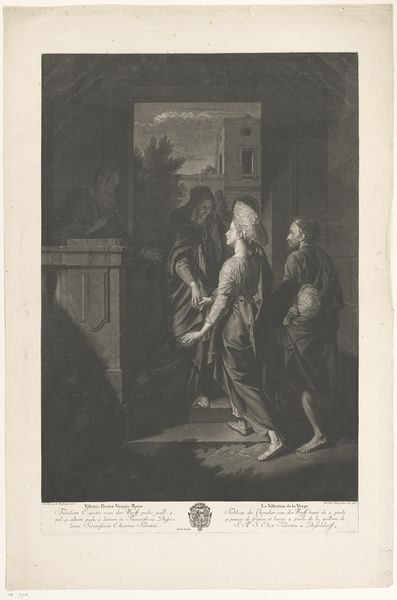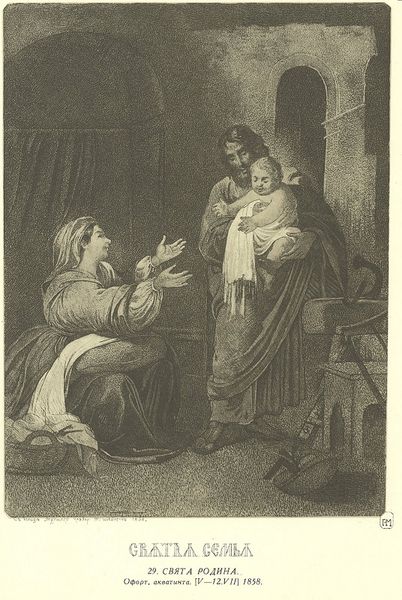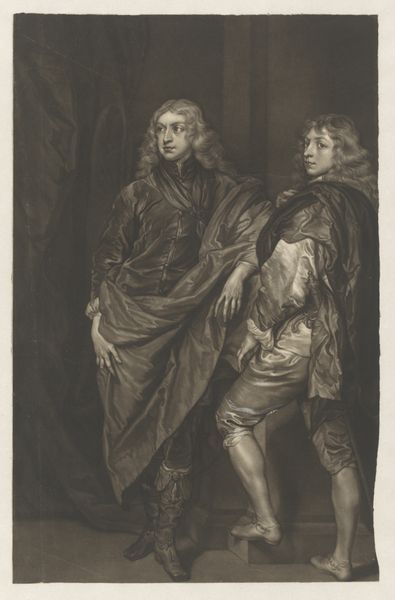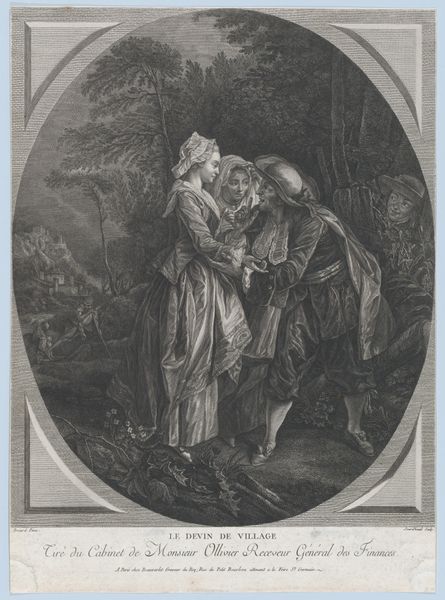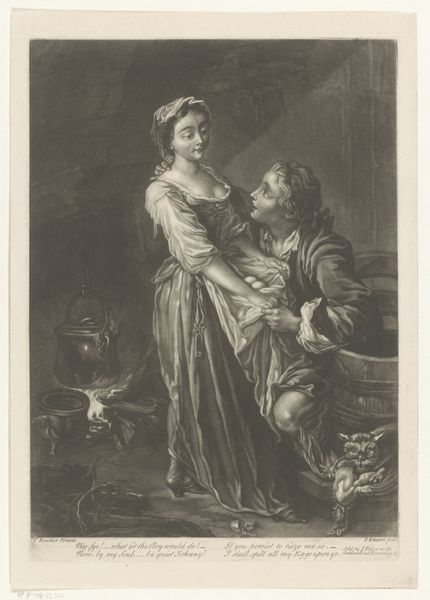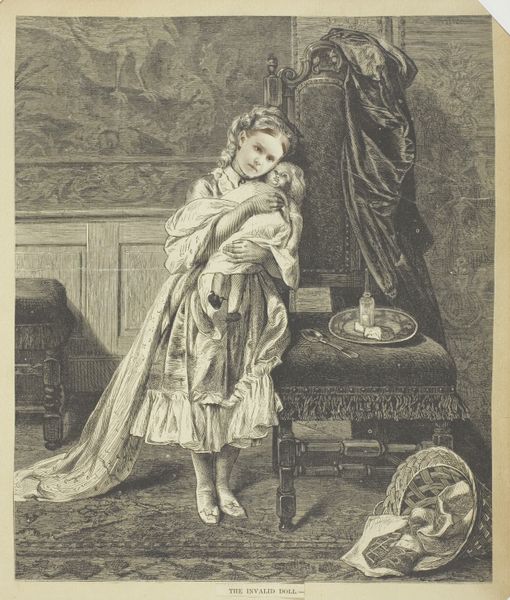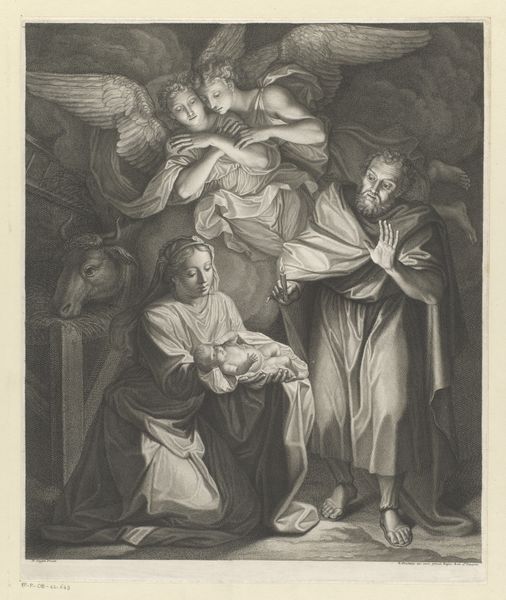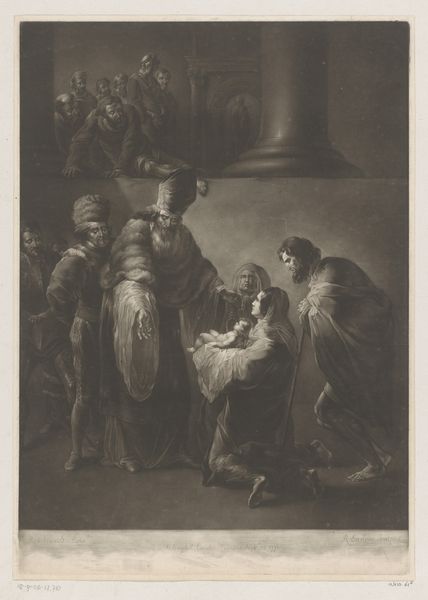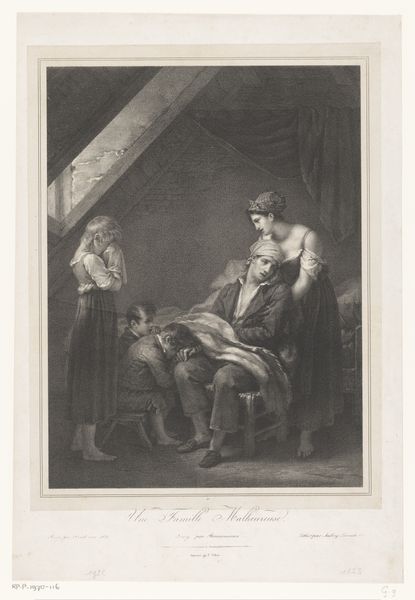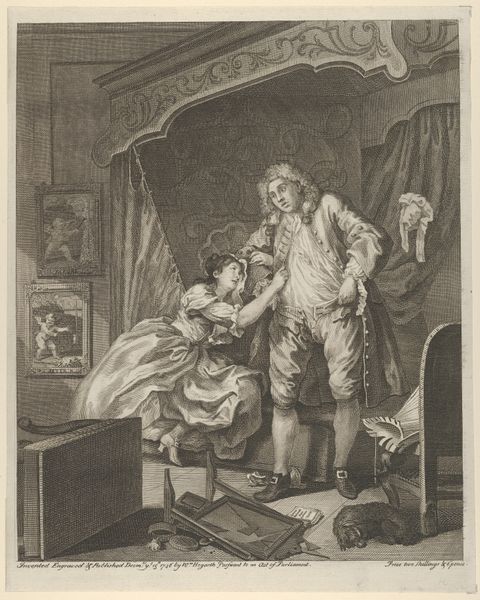
Dimensions: height 502 mm, width 357 mm
Copyright: Rijks Museum: Open Domain
Editor: We’re looking at “The Reconciliation of David and Absalom,” an etching by Johann Gottfried Haid from 1766, housed at the Rijksmuseum. The print depicts a poignant encounter, it feels so charged with emotion and regret. I'm particularly struck by the body language—the kneeling son, the father's gesture. What do you see in this piece, considering the period it was created? Curator: This print, rendered in the old engraving style, reflects the 18th-century fascination with both biblical narratives and the expression of power dynamics within a familial context, but also points at larger social hierarchies. The story of David and Absalom was a common subject, providing artists a vehicle to explore themes of rebellion, forgiveness, and the restoration of social order. Considering the public role of art, how might viewers at the time have interpreted David's act of forgiveness in relation to their own societal structures? Editor: So it's not just about the personal relationship between father and son? Curator: Exactly. In a society deeply invested in ideas of divine right and hierarchical power, this image might also be read as a commentary on the ideal relationship between ruler and ruled, even touching on contemporary political issues and moral standards deemed worthy for depiction in public and private spaces. This etching could promote a particular ideology. The print format itself contributes, making it more accessible to a wider audience than, say, a large-scale oil painting displayed only in elite settings. Does that accessibility change its political implications? Editor: Absolutely. Being a print means wider distribution and potentially wider influence on societal values. It's interesting how the medium itself becomes a part of the message. Curator: Indeed. And understanding the public role and the politics of imagery allows for a far richer appreciation of works such as this. The print, beyond a literal reading of the biblical story, also performs a key function in reinforcing particular structures of authority. Editor: I’ll definitely keep the socio-political implications in mind when considering historical artwork moving forward!
Comments
No comments
Be the first to comment and join the conversation on the ultimate creative platform.
